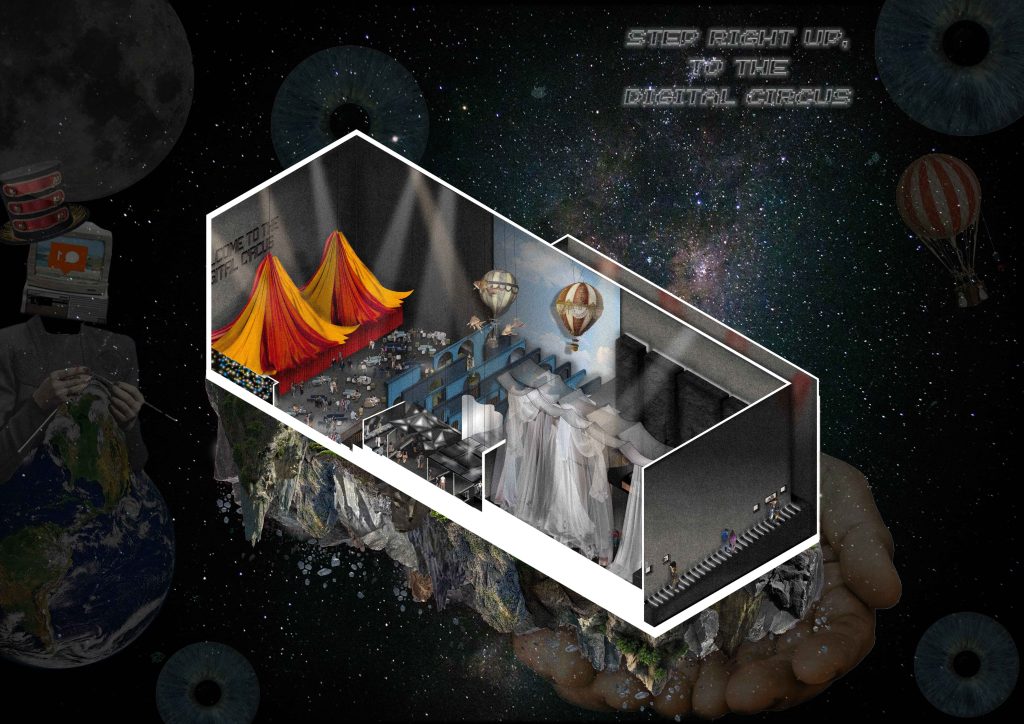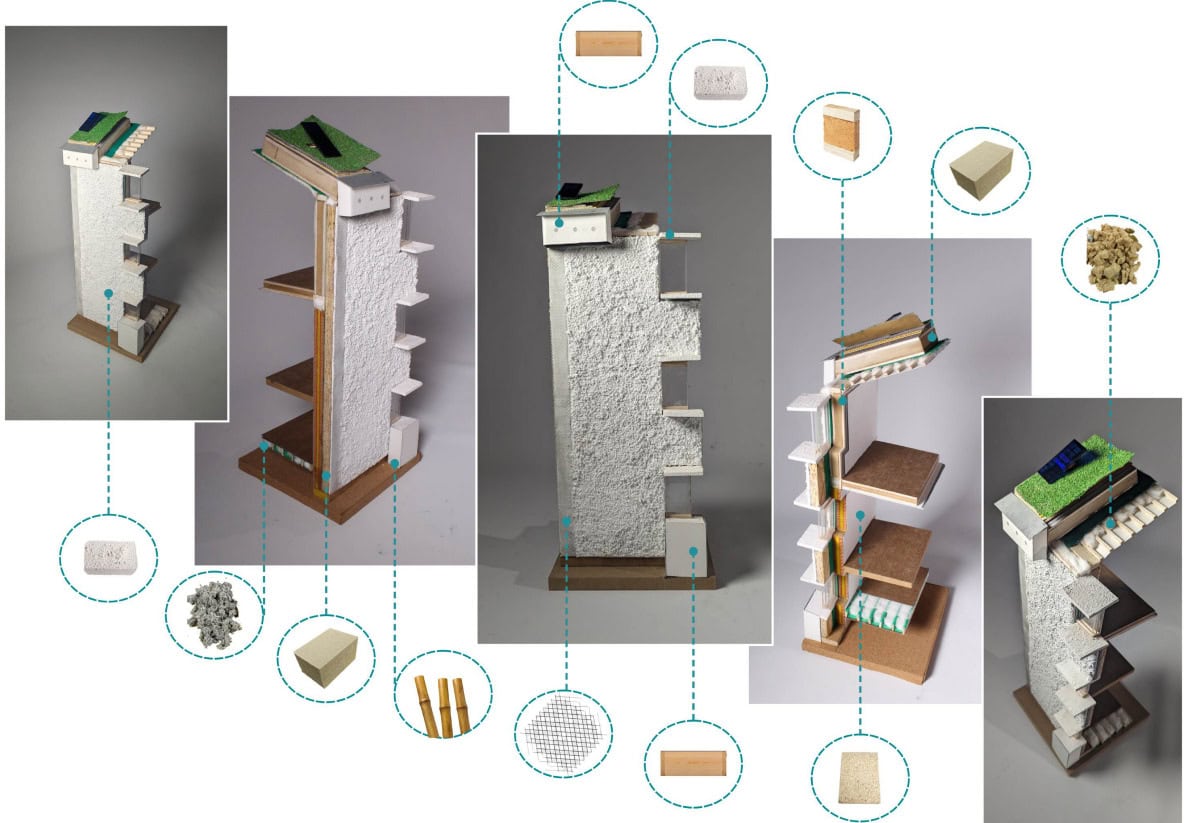Big Top/Selfie: Samantha Cutler’s ‘The Digital Circus’ Unmasks Our Digital Selves
From Lateral Thinking to Liminal Spaces: A Rising Architect’s Vision
Samantha Cutler, a Part II Architectural Assistant with a knack for abstract thinking, is no stranger to defying the conventional. Completing her undergraduate studies at Northumbria University and her MArch at the Manchester School of Architecture, Cutler has spent four years in the industry, including two formative Part 1 placements and ongoing practice during her master’s. Alongside academic accolades—including multiple award nominations for model making—Cutler has developed a design approach rooted in originality, lateral thinking, and a taste for the unconventional. Her latest and most ambitious project to date, The Digital Circus, exemplifies this ethos, offering an immersive critique of our digital lives through spatial experimentation.
Stepping Into the Ring: The Digital Circus Unpacked
At its core, The Digital Circus is both a spectacle and a mirror, transforming the intoxicating, illusory theater of social media into a tactile, navigable landscape. Cutler’s thesis doesn’t merely reference the internet’s psychological grip from afar. Instead, she invites—and arguably traps—visitors within an architectural embodiment of our daily digital dramas.
Drawing on circus motifs, each room and installation in the exhibition exaggerates and physicalizes digital phenomena: the ‘performer’s mask’ of curated self-image, the funhouse-mirror effect of algorithmic distortion, and the heady rush of audience applause that social validation brings. Rather than laying out a linear route, Cutler’s design welcomes, even insists upon, disorientation—a spatial metaphor mirroring the emotional vertigo of life online.
A Gallery for the Performed Self
Individual installations within the Circus are each dedicated to a digital archetype. There is the ‘Ringmaster’ of attention-seeking personas, the ‘Contortionist’ of shifting online identities, and the ‘Juggler’ attempting digital-life balance. Rather than passive artworks, these spaces demand active, sometimes uncomfortable engagement. Visitors may find themselves thrust onto a literal stage, performing for other guests or for ever-present digital avatars. In other pockets, they are confronted with reflections—sometimes smooth, more often warped—of their own behaviour on social platforms.
The curation is deliberately theatrical, yet tinged with ambiguity. Are visitors complicit in the spectacle, observers, or both? This ambiguity is not accidental. “My goal,” says Cutler, “was to break the barrier between observer and performer—to force us to question how passive or complicit we really are when we scroll, click, and ‘like’.”
Materiality and Making: Translating the Digital to the Physical
Award-nominated for her model-making skills, Cutler employs both unconventional materials and abstract spatial strategies to translate the intangible anxieties of digital life into kinetic, sensory experiences. Polished metals and reflective acrylics mimic ubiquitous screens, while shifting, labyrinthine partitions echo the endless scroll of newsfeeds. Some spaces use light, projection, and orchestrated soundscapes to overwhelm; others employ muted tones and tactile surfaces, evoking the eerie solitude one can feel in a crowd of thousands—or followers.
Crucially, the architecture itself becomes a form of storytelling. Boundaries are blurred between art installation and built environment, with each zone acting as a psychological chapter. The resultant disorientation is deliberate, provoking visitors to examine their own roles as both voyeurs and performers within the labyrinth of the digital age.
Collapsing the Distance Between Real and Virtual
More than a thematic exhibition, The Digital Circus is a manifesto for a new kind of architectural engagement with an era defined by virtual presence and ephemeral identity. By foregrounding the performativity, distortion, and spectacle of the internet, Cutler asks powerful questions about the role architects can play in mediating the borderland between “real” and “virtual”: How do our environments—physical or otherwise—shape the selves we project? Can physical spaces scaffold resistance to digital addiction, or do they risk perpetuating it? What new forms of introspection can architecture provoke when focused on the pressing questions of our era?
In a moment where the lines between online and offline experience feel increasingly blurred, Cutler’s work is both timely and provocative. She invites us to consider: what, if anything, is authentic in a world built around performance?
Engage with the Architect Behind the Curtain
For readers and practitioners inspired by Samantha Cutler’s boundary-pushing approach, the invitation to connect is open. Cutler welcomes dialogue with peers, collaborators, and anyone passionate about architecture’s role in a digital future. Explore her portfolio on Behance, connect on LinkedIn, or reach out directly via email at samantha_cutler@msn.com.
With The Digital Circus, Cutler doesn’t just shine a spotlight on the anxieties of networked culture—she dares us to step actively into the ring, reconsidering architecture’s duties and possibilities along the way. As digital lives continue to expand their claim on our sense of self, projects like hers may become ever more vital—both as a critique and as a call for empathetic, responsive design.







Add a comment